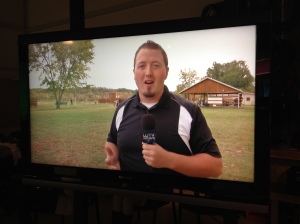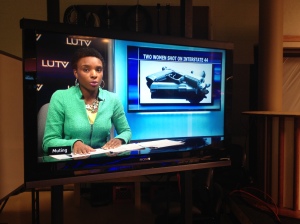Consuming the News
I recently read an article on the Online Journalism Blog called 16 reasons why this research will change how you look at news consumption. The article talks about research done on people and how they consume the news, but it was done differently than just asking people through a survey. This study watched people and recorded what they actually do to consume the news, not what they might say they do in a survey.
One specific example that is talked about in the article is that when people read their news, the tend to remember it. Reason being, is that they had to put time aside to actually read what was happening. Listening on the other hand, such as radio news or even TV news, doesn’t scratch the surface as much because a lot of people seem to simply have these on as background noise.
I think this research is important to future journalists because it allows them to get a look at how the majority consumes their news. They can take the results of this research and use it to be successful. If you are a TV reporter and realize people retain more information from a story through reading, then maybe you should make a web copy of your stories available for your audience to read.
Here’s a good video that talks about what kind of news Americans consume and prefer to consume. This video has some great information for future journalist that they can use to decide how and where they want their content to be seen.
Creating Content for Social Media
The second article I read was also from Online Journalism Blog called Why do you optimize content for search and social? 4 reasons and a mnemomic to boot. This article talks about creating content for social media and the steps to take in order to be successful. With reporters being able to put their own work on social media these days, they become more than just reporters. They now have to decide when to publish stories, what stories should be published, and the angle they take on reporting the story. They become more of a whole newsroom wrapped into one person.
I believe this is important to future journalists because they need to be prepared to have content to go on social media. Whether it’s their own Twitter account or a company account of some sort, they need to know what stories get the most eyes and at what times. If you publish a story on social media at a random or bad time, it’s likely to get overlooked altogether.
Knowledge Gained
The super semester has more or less been a roller coaster ride for me to this point. You have weeks that seem to go by without a hitch, while others seem to never end. One of the best things that I have gained from the experience so far is how important time management is. If you get behind at all, it’s very hard to get caught up.
Another thing I’ve come to learn in this news world, is to take everything with a grain of salt. There’s no reason to get stressed out over something small that is out of your control, especially if it consists of these four letters – AVID. In the end I’m sure I will look back at some of the things I have done and laugh, but for now, my head is down and I’m staying focused.


